NEWS
23 Intriguing Facts About the B-2 Spirit: America’s Stealth Supersonic Wonder
Published
9 months agoon

Shutterstock
The B-2 Spirit, widely recognized as the Stealth Bomber, represents the pinnacle of technological innovation and strategic expertise in military aviation. Developed by Northrop Grumman for the United States Air Force, the B-2 is an exceptional blend of cutting-edge engineering and stealth features. Since its first flight in 1989, this iconic aircraft has revolutionized strategic bombing by providing unmatched capability to penetrate heavily defended airspace undetected.
With its distinctive flying-wing design, radar-absorbing materials, and ability to traverse intercontinental distances, the B-2 is far more than just a powerful nuclear deterrent. It exemplifies operational versatility, proving effective in both conventional and nuclear missions. As a symbol of advanced aerial prowess, the B-2 Stealth Bomber remains a critical element of the United States’ strategic military power, embodying stealth, precision, and extensive global reach.
With its distinctive flying-wing design, radar-absorbing materials, and ability to traverse intercontinental distances, the B-2 is far more than just a powerful nuclear deterrent. It exemplifies operational versatility, proving effective in both conventional and nuclear missions. As a symbol of advanced aerial prowess, the B-2 Stealth Bomber remains a critical element of the United States’ strategic military power, embodying stealth, precision, and extensive global reach.
Maintenance Challenges

Shutterstock
The B-2 Spirit’s advanced stealth features require rigorous upkeep of its specialized radar-absorbing coating to maintain its operational efficacy. Close attention to this coating’s condition is essential, as any deterioration or damage could compromise the bomber’s stealth capabilities, making it detectable in heavily fortified airspace. The commitment to swift repair and maintenance of the stealth coating underscores the importance of preserving the B-2’s crucial role in strategic missions, where evading enemy radar detection is key to its success.
Strategic Arms Reduction Treaty (START)
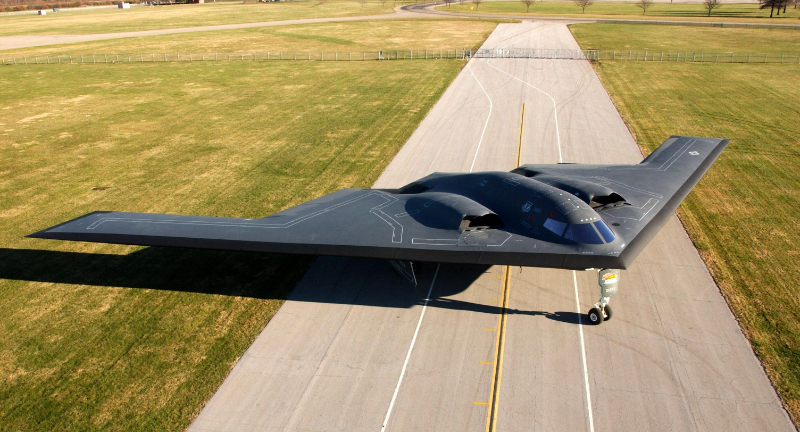
Shutterstock
The inclusion of the B-2 Spirit in the New START treaty highlights its significant role in global arms control efforts. As a crucial element of the United States’ nuclear triad, the B-2’s adherence to strategic arms reduction agreements underscores a commitment to global stability and the prevention of nuclear arms proliferation. This incorporation not only underscores the B-2’s value as a powerful military asset but also as a diplomatic instrument, playing a vital role in international efforts to curb the growth of strategic nuclear arsenals.
Strategic Superiority at High Altitudes
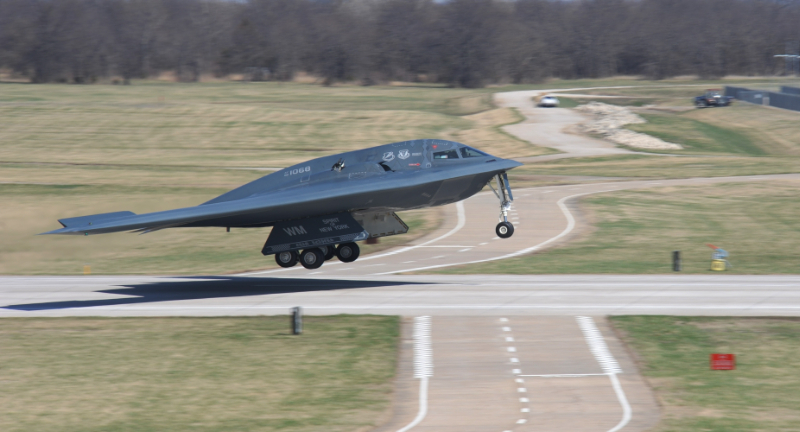
Shutterstock
The B-2 Spirit’s ability to cruise at altitudes up to 50,000 feet (15,240 meters) provides a significant tactical advantage. Operating at such high elevations places the bomber beyond the range of many standard enemy defenses and enhances its survivability by exploiting the thinner atmosphere. This altitude capability allows the B-2 to execute missions with increased stealth, avoiding potential threats and ensuring the precise accomplishment of its strategic objectives.
Historic Nonstop Flight of the B-2 Spirit
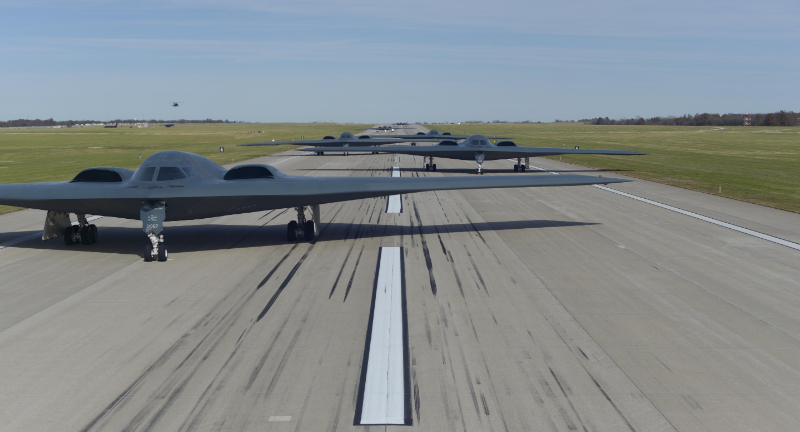
Shutterstock
In 1997, the B-2 Spirit achieved a significant milestone in aviation history by completing a continuous global flight that lasted slightly over 44 hours. This remarkable feat set a new record and highlighted the aircraft’s exceptional range and endurance. The accomplishment demonstrated not only the bomber’s advanced operational capabilities but also its versatility and global reach. It underscored the strategic importance of an aircraft capable of being rapidly deployed on extended missions to address emerging threats. The B-2’s ability to circumnavigate the globe without refueling cemented its status as a vital asset in the strategic arsenal of the United States Air Force.
Development

Shutterstock
The creation of the B-2 Spirit, commonly known as the Stealth Bomber, underscores the technical prowess of Northrop Grumman in collaboration with the United States Air Force. Originating in the 1980s, this groundbreaking project aimed to create a strategic bomber with unparalleled stealth capabilities, capable of penetrating highly fortified airspace undetected. The successful development of the B-2 marked a significant milestone in military aviation, showcasing Northrop Grumman’s engineering excellence and introducing a platform that revolutionized modern aerial combat.
Limited Production
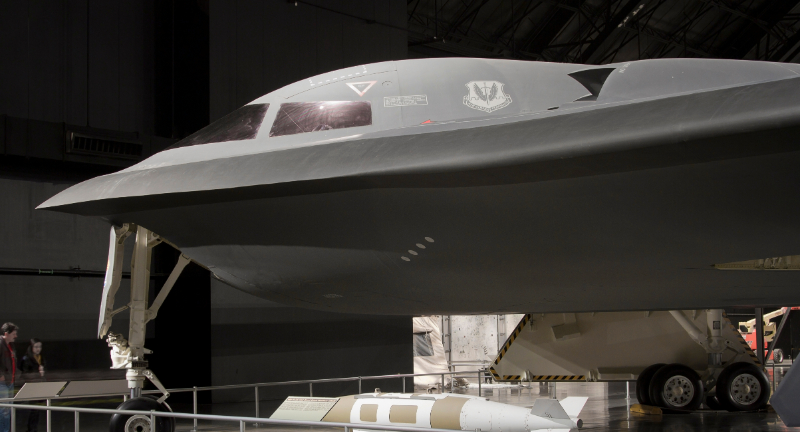
Shutterstock
The B-2 Spirit, representing the height of technological innovation and exceptional capabilities, faces significant production costs, leading to only 21 bombers being built. This rarity emphasizes its status as one of the most expensive aircraft globally, highlighting the delicate balance between technological advancement and budgetary constraints in military aviation. The limited production of the B-2 enhances its elite status and underscores the strategic importance of each unit, showcasing the United States’ commitment to maintaining a small but powerful fleet of these unmatched bombers.
Range
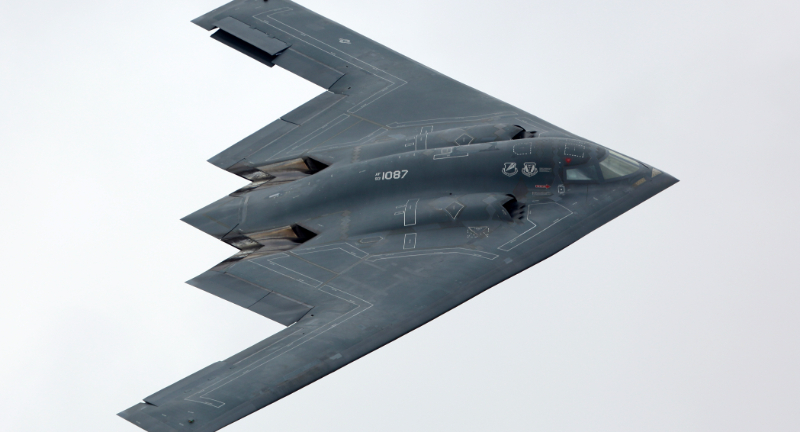
Shutterstock
The B-2 Spirit’s remarkable intercontinental range, exceeding 6,000 nautical miles on a single fuel load, underscores its unparalleled capability for extended strategic missions. This extraordinary range allows the bomber to traverse vast distances, making it a vital asset for global power projection and executing precise strikes deep within enemy territory. The impressive range of the B-2 enhances its flexibility in response to changing geopolitical situations and solidifies its role as a vital and versatile component of the United States Air Force’s strategic arsenal.
Enduring Legacy of the B-2 Spirit

Shutterstock
Debuting at the close of the 20th century, the B-2 Spirit showcases exceptional durability, with plans to retain its active status far into the future. This extended operational life is underpinned by a committed approach to ongoing upgrades, ensuring the bomber remains versatile in the face of evolving strategic demands. The B-2’s longevity highlights its advanced technology and the high regard for this iconic aircraft within the United States Air Force’s arsenal.
Stealth Technology
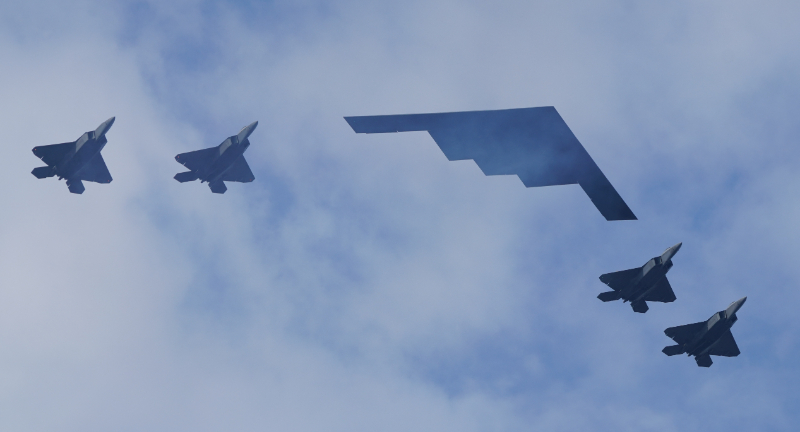
Shutterstock
The impressive presence of the B-2 Spirit lies in its cutting-edge stealth technology, a crucial feature that enables the aircraft to navigate through heavily protected airspace with radar signatures that are almost imperceptible. The plane’s unique design, coupled with its radar-absorbing materials and other classified advancements, collaborates to evade enemy defenses effortlessly, providing a significant advantage in strategic operations. This advanced stealth capability underscores the B-2’s importance as a key asset in the United States Air Force, proficient in delivering precise strikes and maintaining a strong deterrent stance globally.
Global Strike Capability
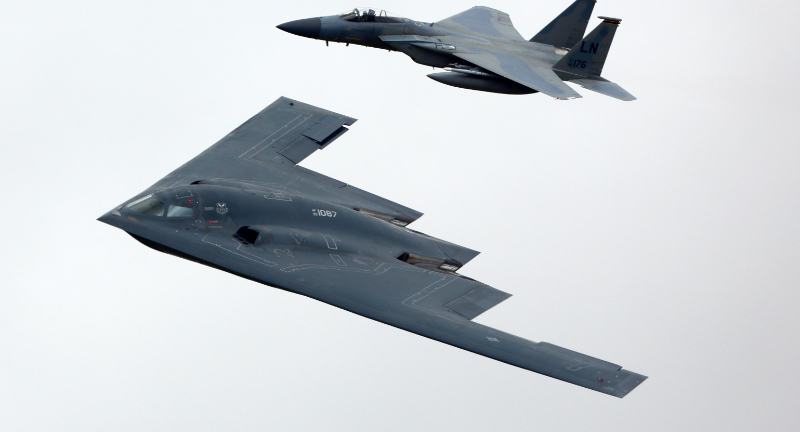
Shutterstock
The B-2 Spirit plays a crucial role in the United States’ nuclear triad, standing as a cornerstone of the nation’s strategic forces and offering vital global strike capabilities. Its versatility in deploying both nuclear and conventional weapons makes the B-2 a formidable and adaptable asset in countering evolving geopolitical threats. This global strike proficiency not only fortifies the United States’ deterrence strategy but also highlights the B-2’s significant impact on national security by facilitating worldwide force projection when needed.
Fly-by-Wire System
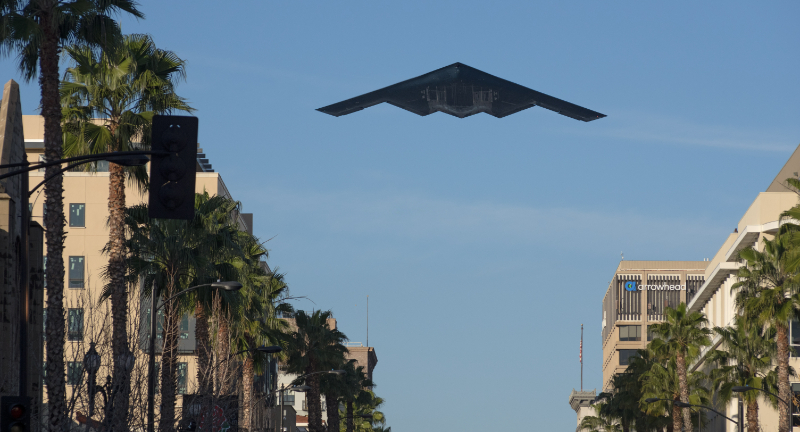
Shutterstock
The B-2 Spirit’s advanced flight capabilities are primarily attributed to its cutting-edge fly-by-wire system. This innovative technology significantly enhances the bomber’s agility and stability by utilizing computerized control systems that process pilot inputs. The fly-by-wire system improves the aircraft’s responsiveness and effectiveness in navigating diverse and challenging airspace conditions. By integrating this system, the B-2 Spirit underscores its technological superiority, focusing on precision and adaptability to successfully achieve both conventional and strategic missions.
First Flight
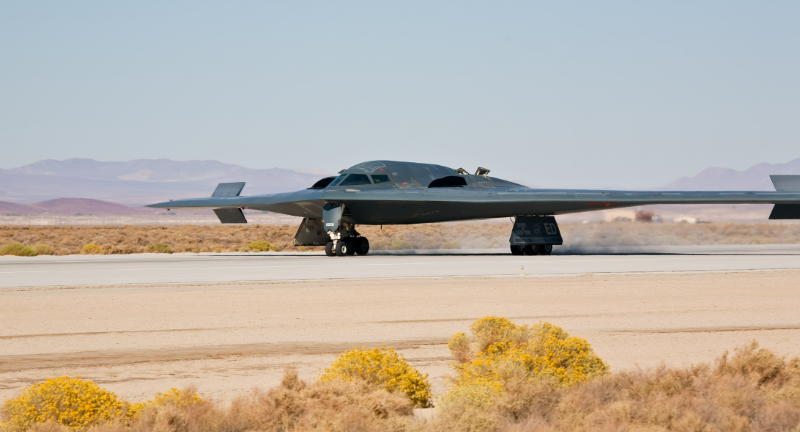
Shutterstock
On July 17, 1989, the B-2 Spirit made its maiden voyage, marking a monumental moment in aviation history. This initial flight demonstrated the aircraft’s innovative design and paved the way for its induction into service in 1997. The substantial eight-year gap from its first flight to operational status underscores the comprehensive testing and improvements conducted, solidifying the B-2’s status as a technological marvel and a crucial component of the United States’ strategic aerial superiority.
Operational Versatility of the B-2 Spirit
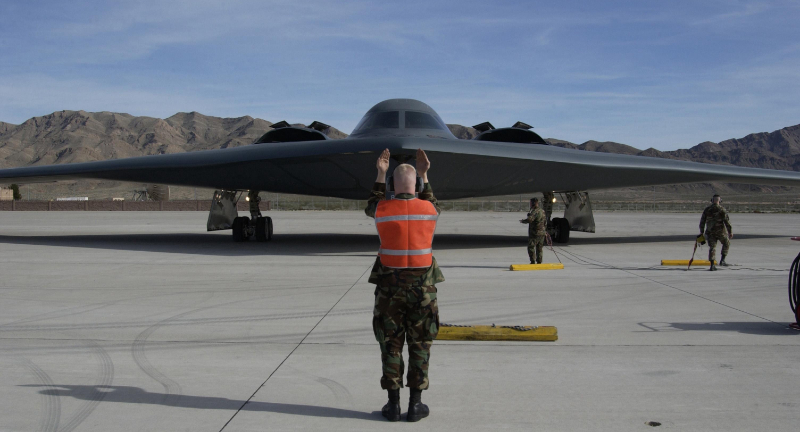
Shutterstock
The B-2 Spirit’s operational flexibility arises from its capability to function seamlessly in any weather, while evading sophisticated enemy defenses. This adaptability allows the bomber to execute strategic missions with precision and efficiency across diverse environments, reinforcing its role as a reliable asset in any combat situation. The B-2’s skill in navigating through adverse weather conditions and remaining undetected by foes underscores its versatility, solidifying its position as a formidable force prepared to undertake a broad spectrum of military operations.
Sustaining Strategic Superiority

Shutterstock
The B-2 Spirit is integral to the United States’ defense strategy, playing a pivotal role in maintaining strategic advantage globally. Its unmatched stealth capabilities, extensive intercontinental range, and versatility in delivering both nuclear and conventional payloads underscore its essential contribution to national deterrence and global power projection. As a multifaceted and formidable asset, the B-2 remains at the forefront of modern military operations, helping the United States navigate evolving geopolitical challenges and sustain a powerful, credible military presence.
B-2 Spirit Crew
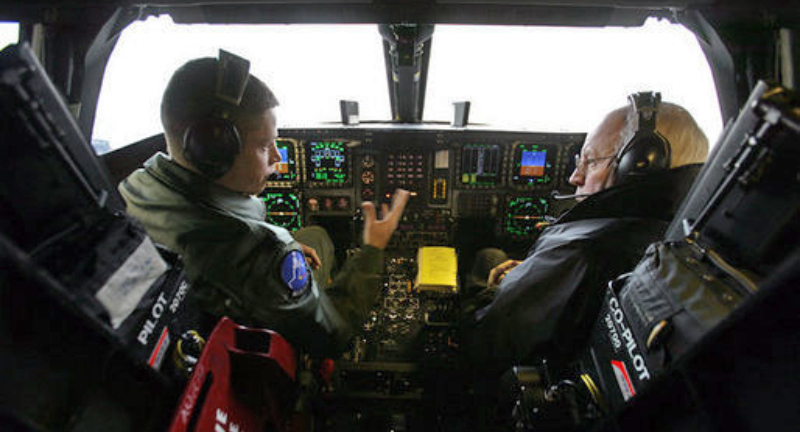
Shutterstock
The operational excellence of the B-2 Spirit is highlighted by its crew configuration, designed around a two-member team: a skilled pilot and a mission commander. This compact yet highly specialized duo emphasizes the aircraft’s advanced avionics and automation technologies, which are tailored to manage the complexities of modern warfare with utmost efficiency. The collaboration between the pilot and mission commander ensures the seamless execution of the B-2’s diverse mission profiles, from precision strikes to strategic nuclear deterrence. This setup not only illustrates the aircraft’s versatility but also demonstrates the crew’s expertise in adapting to the evolving dynamics of global security.
Nuclear Deterrence
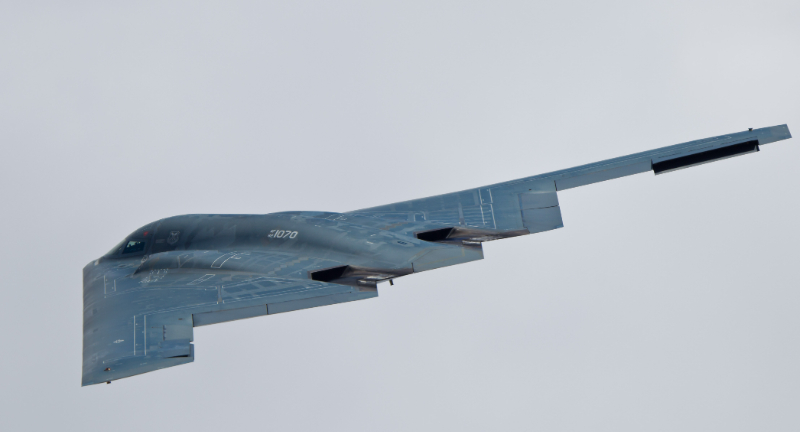
Shutterstock
The B-2 Spirit occupies a crucial role in global security, significantly contributing to nuclear deterrence with its ability to deliver both nuclear and conventional payloads. Serving as a symbol of strategic intent, the bomber can execute precise as well as extremely powerful strikes, deterring potential threats and encouraging caution. This dual capability not only underscores the B-2’s influence in global security dynamics but also solidifies its standing as a vital element in the United States’ commitment to maintaining a robust and credible nuclear deterrent system.
Upgraded Avionics

Shutterstock
The enduring significance of the B-2 Spirit in modern warfare is largely due to its remarkable adaptability, highlighted by continuous avionics updates throughout its service life. These upgrades represent a proactive approach to maintaining a competitive edge in the rapidly shifting technological environment, securing the bomber’s position as a leader in strategic military assets. The ongoing modernization of its avionics systems not only prolongs the B-2’s operational viability but also exemplifies the aircraft’s ability to assimilate advanced technologies. This adaptability enhances its capabilities against new and evolving global threats, affirming its critical role in contemporary and future military operations.
Air-to-Air Refueling
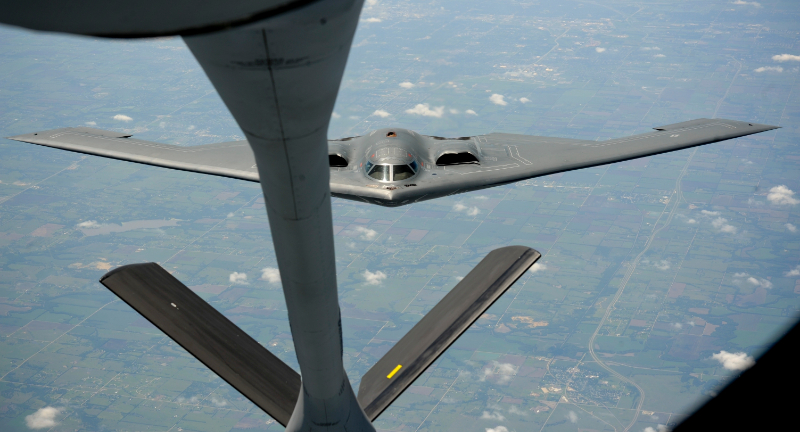
Shutterstock
The B-2 Spirit’s skill in air-to-air refueling significantly enhances its range and endurance, allowing it to undertake extended missions well beyond the limitations of base proximity. This capability substantially boosts the bomber’s operational versatility, enabling it to reach distant targets and maintain a presence in critical regions for prolonged periods—essential for strategic positioning and complex mission execution. The B-2’s proficiency in air-to-air refueling underscores its adaptability and capacity to effectively accomplish a broad array of strategic and tactical objectives globally, solidifying its role as a crucial element of the United States Air Force’s strategic framework.
Operation Allied Force
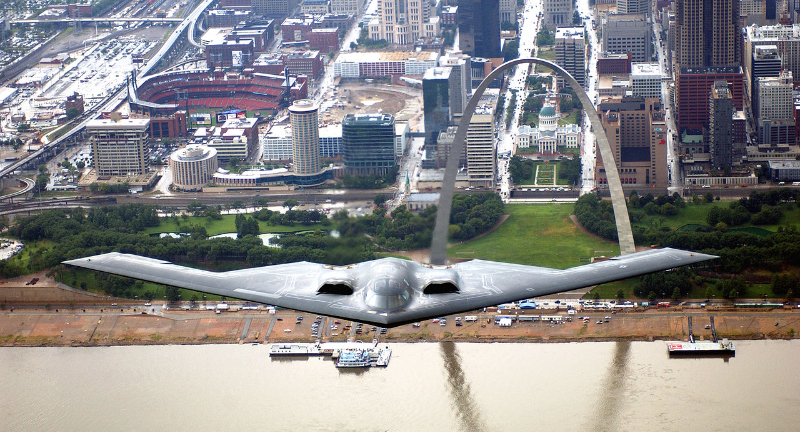
Shutterstock
The B-2 Spirit made its combat debut during NATO’s Operation Allied Force in 1999, emphasizing its crucial role in modern warfare. In the Kosovo campaign, the B-2 was key in carrying out precise and impactful bombing missions, showcasing its ability to operate in diverse environments and significantly support multinational military efforts. Its successful deployment in Operation Allied Force demonstrated its combat effectiveness, solidifying its position as an essential asset in contemporary air warfare strategies.
Payload Capacity
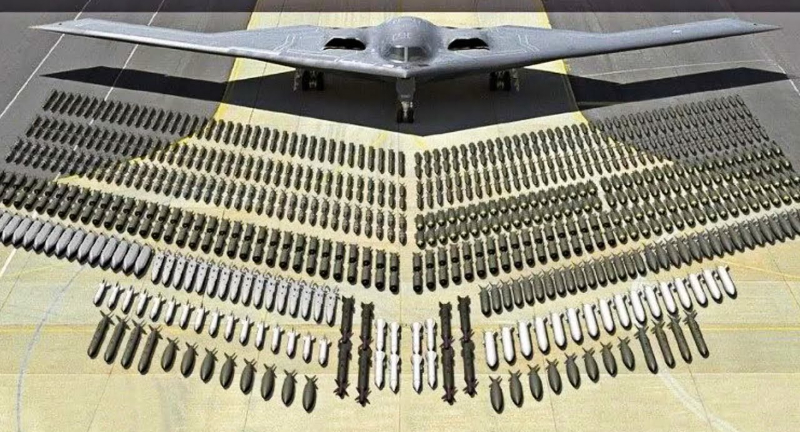
Shutterstock
The formidable prowess of the B-2 Spirit stems from its exceptional payload capacity, enabling it to carry up to 40,000 pounds of either nuclear or conventional munitions. This significant load-bearing capability emphasizes the B-2’s adaptability in deploying various payloads and establishes it as a powerful force for precision strikes and strategic deterrence. The ability to transport such heavy payloads enhances the bomber’s utility across a broad range of operational scenarios, from targeted surgical strikes to extensive strategic bombing operations, solidifying its role as a critical asset in military strategy.
Shape Shifting
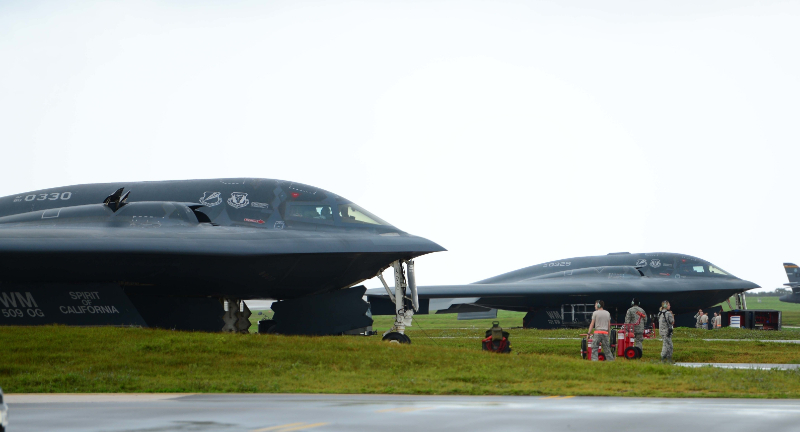
Shutterstock
The B-2 Spirit’s innovative dynamic wings, which can alter their shape during flight, represent a substantial technological breakthrough, enhancing its operational versatility. This capability to morph its configuration based on mission requirements enables the bomber to seamlessly transition between different flight profiles, from high-altitude strategic bombardment to low-level penetration missions. This adaptability highlights the B-2’s proficiency in executing diverse mission types with consistent precision, ensuring its sustained relevance and efficacy in the evolving landscape of modern warfare.
Enhanced Precision with Guided Munitions
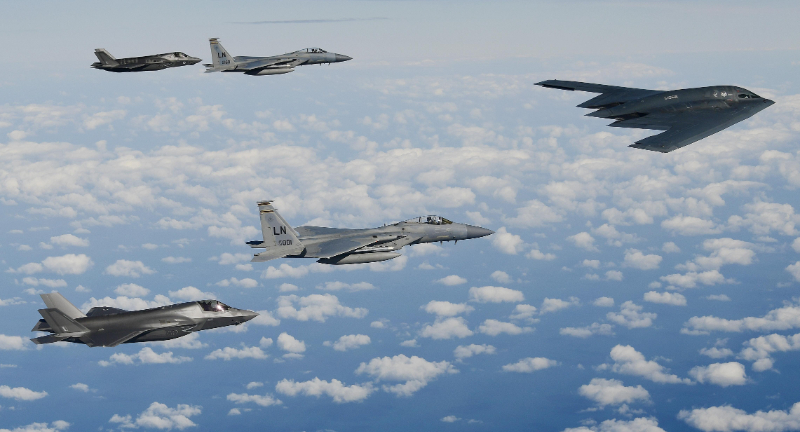
Shutterstock
The integration of precision-guided munitions into the B-2 Spirit represents a revolutionary shift in modern warfare tactics, significantly enhancing its precision strike capabilities. This advancement allows the bomber to target and engage specified objectives with exceptional accuracy, minimizing the risk of collateral damage. The precision offered reinforces the B-2’s adaptability to the dynamic needs of contemporary military operations. Employing precision-guided munitions highlights the B-2’s role as a vital strategic asset, capable of executing highly accurate attacks while remaining versatile enough to handle a diverse range of mission requirements.
Shape and Coating

Shutterstock
The B-2 Spirit’s signature flying-wing configuration and radar-absorbing material are critical to its groundbreaking stealth features. Its unique silhouette significantly lowers its radar profile, diminishing the chance of being spotted and allowing for clandestine operations in well-fortified areas. Additionally, the aircraft’s specialized coating is designed to absorb and disperse radar waves, augmenting its evasion from enemy radar detection. This rigorous focus on stealth engineering effectively makes the B-2 almost undetectable to opposing radars, affirming its value as a strategic tool in executing unexpected and precise strikes in both traditional and nuclear operations.
B-2 Spirit: Stealth and Efficiency without Afterburners
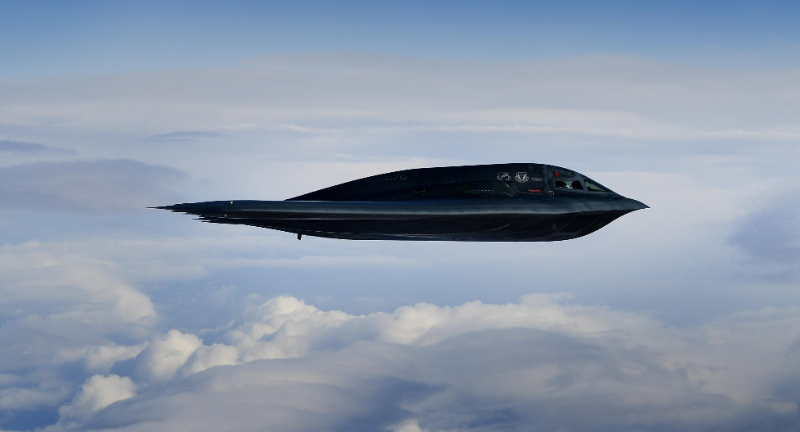
Shutterstock
The B-2 Spirit stands out from other military aircraft with its unique design that does not include afterburners. This choice highlights the aircraft’s focus on stealth and operational efficiency. By not using afterburners, the B-2 reduces its infrared signature and conserves fuel, which enhances its mission capabilities. This design decision underscores the B-2’s strategic goal of balancing stealth and fuel efficiency, crucial for executing long-range and extended-duration missions.
Stealth Successor
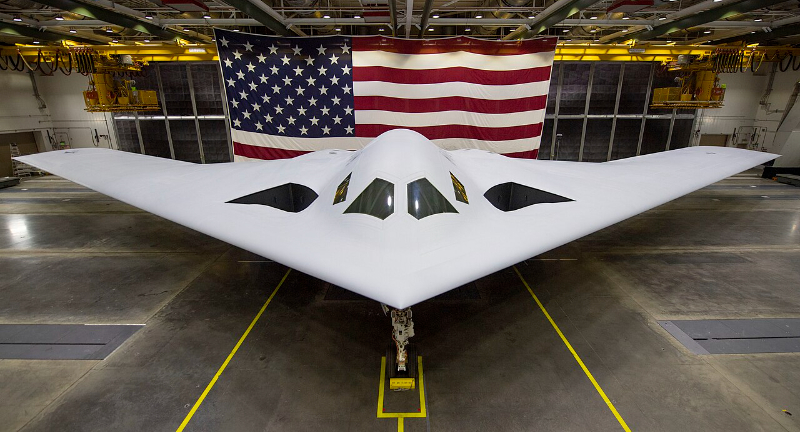
Shutterstock
The introduction of the B-21 Raider underscores the United States Air Force’s ongoing efforts to evolve its strategic bomber fleet. Envisioned as the next step following the B-2 Spirit, the B-21 is designed to capitalize on the foundational achievements of its predecessor by incorporating the latest advancements in stealth technology and avionics. This progression aims to bolster the United States’ capacity for global power projection. As the B-2’s heir, the B-21 Raider is poised to significantly influence the future landscape of long-range precision strike operations, securing American aerial supremacy for the foreseeable future.
Conclusion
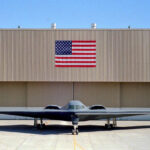
Wikipedia
The B-2 Spirit’s legacy as a cornerstone of American air power is characterized by its unparalleled stealth capabilities, strategic flexibility, and technological advancements. As it paves the way for its successor, the B-21 Raider, the B-2 continues to symbolize the United States Air Force’s commitment to maintaining global security and deterrence through innovation and strategic foresight. The transition towards the B-21 underscores a future where advanced technology and strategic capabilities remain central to upholding air dominance. Thus, the enduring legacy of the B-2 Spirit not only reflects its historical significance but also its role in shaping the future trajectory of strategic air power, ensuring the United States remains at the forefront of global military prowess well into the 21st century.
More Money + Investing
-


20 WWII Military Marvels That Redefined Warfare
-


17 Unmistakable Clues That Someone Is Gaslighting You
-


21 Electric Vehicle Problems Owners Discover Months After Buying
-


Top 24 Canine Guardians: The Best Dog Breeds for Security
-


25 Epic Car Flops That Made History
-


24 Items That Are Too Pricey for Shoppers Now
-


15 Powerful Arguments to Ban Electric Cars Permanently
-


21 Brands That Have Stirred Up The ‘Woke’ Debate
-


25 Things That Deserve More Social Acceptance
-


20 Red Flags You’re Stuck in a Toxic Friendship
-


20 Budget-Friendly Foods for a Healthier Heart
-


20 Sneaky Habits That Could Sabotage Your Retirement
